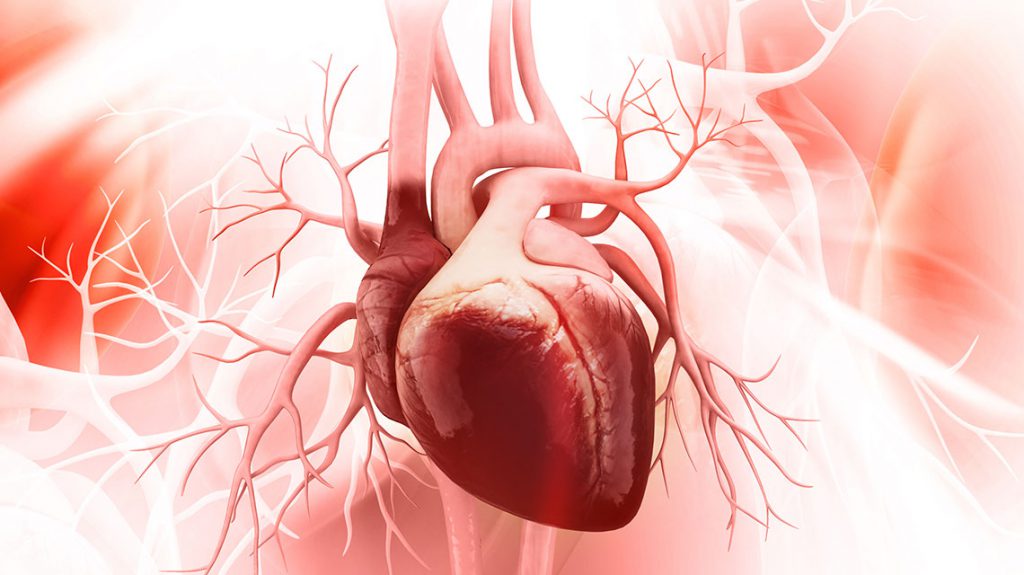Room for Improvement: Heart Catheterization Risks in Young Patients With Pulmonary Hypertension
Room for Improvement: Heart Catheterization Risks in Young Patients With Pulmonary Hypertension https://pediatricsnationwide.org/wp-content/uploads/2018/05/CAVD-header-1024x575-1.jpg 1024 575 Katie Brind'Amour, PhD, MS, CHES Katie Brind'Amour, PhD, MS, CHES https://pediatricsnationwide.org/wp-content/uploads/2021/03/Katie-B-portrait.gif- May 15, 2018
- Katie Brind'Amour, PhD, MS, CHES

Identifying risk factors for cardiac catheterization complications offers physicians a way to improve pulmonary hypertension care.
Up until a few years ago, cardiac catheterization in patients with pulmonary hypertension was considered a low-risk procedure for children and young adults. Some of the country’s best physicians had published studies showing very few complications among hundreds of procedures, and solid research supports low risk for adults with the same procedure. But something about that picture didn’t align with the experience and early research of Michael O’Byrne, MD, MSCE, an interventional cardiologist in the Cardiac Center at Children’s Hospital of Philadelphia and epidemiologist at their Center for Pediatric Clinical Effectiveness. Once he started digging, he found the case may be just the opposite: children with pulmonary hypertension have clinically significant risks for major adverse events related to heart catheterizations.
“I thought it was important to see not just what leading pulmonary hypertension centers were doing but also what was going on in real-world practice, so that doctors working in any setting could make appropriate decisions about how risks of the diagnostic procedure compare to the benefit of the information that can be gained,” says Dr. O’Byrne, who was first author on a recently published study in the Journal of the American Heart Association examining adverse events among children and young adults undergoing cardiac catheterization for pulmonary hypertension.
Dr. O’Byrne and his colleagues examined data from 8111 procedures across 77 centers and found that composite risk for early major adverse events — such as death, cardiac arrest or requiring mechanical circulatory support during or shortly after the procedure — was 1.4 percent. The risk of death prior to discharge was more than 5 percent. Risks were highest in newborns, patients with low oxygen levels, patients taking inotropes and patients with more severe pulmonary hypertension. These findings supported Dr. O’Byrne’s prior research. There was one factor with a protective effect, however.
“In almost every field of medicine there is evidence that having a procedure performed at a place that does a lot of that particular procedure often reduces the risk of bad outcomes, and we were able to show that was the case here,” says Dr. O’Byrne. “There is a real benefit to having it done at a center with a higher volume of catheterizations in patients with pulmonary hypertension.”
Unlike many unmodifiable health-related factors associated with increased cardiac catheterization risk, the center at which the procedure is performed — and possibly the practices used that make those centers so successful — could offer physicians an avenue to decrease the risk of major adverse events in high-risk patients. Furthermore, knowing what puts pulmonary hypertension patients at high risk enables physicians to evaluate patients on the individual level and make customized management decisions, such as delaying, avoiding or referring for the procedure.
“The overall composite event rate was low and in keeping with prior studies, but the risk of death before discharge was high for pediatric pulmonary hypertension patients,” says Elisa Bradley, MD, a cardiologist in The Heart Center at Nationwide Children’s Hospital and senior author on an invited editorial reviewing Dr. O’Byrne’s research and other related studies, also published in the Journal of the American Heart Association. “The work of Dr. O’Byrne and his colleagues identified some practical opportunities for physicians to improve decision-making for high-risk patients and for the field as a whole to move toward risk reduction.”
Dr. Bradley’s editorial provides an algorithm based on Dr. O’Byrne’s and others’ research to aid in identifying high-risk pulmonary hypertension patients and assist in decision-making regarding procedure avoidance, pre-procedural therapy and risk modification, such as referring the patient to a high-volume center.
Dr. O’Byrne’s research used data from the IMPACT (Improving Adult and Congenital Treatment) registry, which collects data from 88 hospitals that perform cardiac catheterizations in children and adults. The registry offers a representative national sample of children and adolescents with pulmonary hypertension undergoing the procedure, including patients with congenital heart disease. He is confident the registry will continue to improve the understanding of real-world risk factors in this population.
“The natural next step is to identify the differences in practice between high-volume and other centers to see if we can find best practices to disseminate,” says Dr. O’Byrne, who is planning a comparative effectiveness study on this topic. “The goal is to identify modifiable risk factors and care practices, spread the word so that every center does better and, ultimately, benefit patient safety.”
References:
- O’Byrne ML, Kennedy KF, Kanter JP, Berger JT, Glatz AC. Risk factors for major early adverse events related to cardiac catheterization in children and young adults with pulmonary hypertension: An analysis of data from the IMPACT (Improving Adult and Congenital Treatment) registry. J Am Heart Assoc. 2018 Feb 28;7(5).
- Jassal A, Cavus O, Bradley EA. Pediatric and adolescent pulmonary hypertension: What is the risk of undergoing invasive hemodynamic testing? J Am Heart Assoc. 2018 Feb 28;7(5).
About the author
Katherine (Katie) Brind’Amour is a freelance medical and health science writer based in Pennsylvania. She has written about nearly every therapeutic area for patients, doctors and the general public. Dr. Brind’Amour specializes in health literacy and patient education. She completed her BS and MS degrees in Biology at Arizona State University and her PhD in Health Services Management and Policy at The Ohio State University. She is a Certified Health Education Specialist and is interested in health promotion via health programs and the communication of medical information.
-
Katie Brind'Amour, PhD, MS, CHEShttps://pediatricsnationwide.org/author/katie-brindamour-phd-ms-ches/April 27, 2014
-
Katie Brind'Amour, PhD, MS, CHEShttps://pediatricsnationwide.org/author/katie-brindamour-phd-ms-ches/April 27, 2014
-
Katie Brind'Amour, PhD, MS, CHEShttps://pediatricsnationwide.org/author/katie-brindamour-phd-ms-ches/April 27, 2014
-
Katie Brind'Amour, PhD, MS, CHEShttps://pediatricsnationwide.org/author/katie-brindamour-phd-ms-ches/April 28, 2014
- Posted In:
- In Brief





